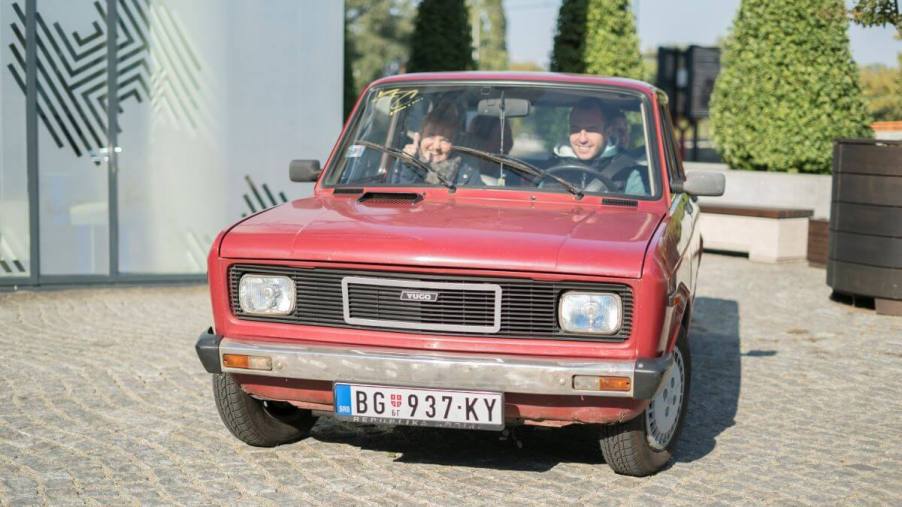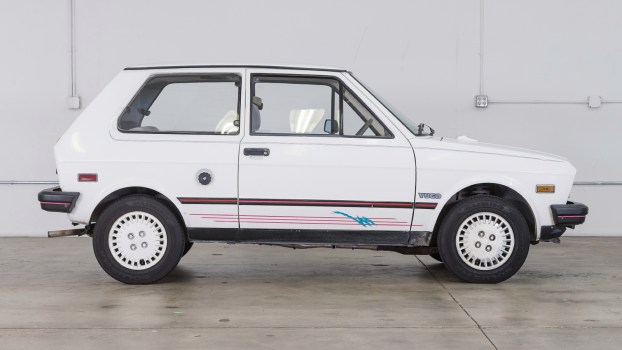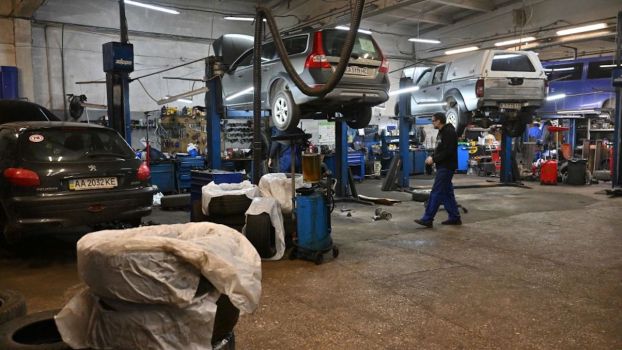
The Factory That Churned Out 1 of the Worst Cars Also Made Machine Guns
When discussing the worst vehicles ever produced, it’s tough to not put the Yugo at the top of the list. Yes, there have been some rough vehicles produced for the U.S. market. The Plymouth Volare and Dodge Aspen, to name a few, were so poorly made that many rusted in only a few months on the road, leading to mass recalls. The GM X-body vehicles are also viewed as historically bad. These vehicles were powered by the noisy Iron Duke four-cylinder engine, which, while reliable, was incredibly slow. This is the same engine found in every United States Postal Service mail truck. Couple this low-performing engine with rear brakes that would lock up upon heavy braking, and you have a dangerously bad vehicle.
However, none of these vehicles are as bad as the Yugo. The reason they are impossible to find today shows how fast these vehicles disappeared from existence with nobody saving them. The Yugo was a crazy experiment in American automotive importing, and due to safety restraints, there will never be another horrible vehicle on American roads today that matches the Yugo. Here is everything you need to know about this crazy little hatchback produced overseas in a machine gun factory and then sold to Americans.
What is the Yugo?
According to J.D. Power, the Yugo got its start when Malcolm Bricklin, an automotive entrepreneur and father of the Bricklin SV-1, was in Serbia. Bricklin was traveling around Europe looking for a new automotive endeavor, and he just so happened to meet Crvena Zastava, a Communist Yugoslavian manufacturer. Zastava had a company producing these small hatchback vehicles called the Zastava Jugo. Bricklin toured the factory, which also produced machine guns alongside the car. Despite the poor working conditions and dark lighting, the vehicle’s low wholesale price of $2,000 wholesale couldn’t be beaten.
Bricklin knew he had a vehicle he could import into the United States and sell for nearly double the price at $3,990. While importing wholesale goods, labeling them as your own, and selling them at double the price is found everywhere in American businesses today, Bricklin was 40 years ahead of the curve, and the first Yugo GV, as it was called in America, was first sold in 1985.
How bad was the Yugo?
The Yugo wasn’t just a poorly performing vehicle; it was dangerous. By 1987, there were five models of Yugo to choose from. The base model was called the GV, or “Great Value” model. Then there was the GVS model, which had “sporty” trim, and then the GVL, which came with some interior upgrades. The GVC came with a glass sunroof, and finally, the top of the top-of-the-line GVX model came with the biggest engine, a manual transmission, and rally headlights. There was even a cabriolet convertible model sold in 1988, but not many were produced. The Yugo was advertised strictly on its low cost, with many advertisements using the tagline “Everybody Needs a Yugo Sometime.”
The Yugo came standard with a 55-horsepower engine, which Car and Driver claim is only good for a 0 to 60 mph time of 14 seconds. Despite its low weight and tiny engine, the Yugo has horrible fuel economy, with only a combined rating of 25 mpg. The Honda Civic CRX HF was much faster, better built, and had nearly double the fuel economy numbers at 51 mpg on the high end. The Yugo also came to the U.S. market equipped with the wrong parts. The Yugo’s spark plugs were not suited for American unleaded fuel, so the nameplate ran incredibly poorly. The Yugo also required a timing belt replacement at 30,000 miles. Because these vehicles were so cheaply produced, many buyers never serviced these belts, leading to catastrophic engine failure that would total the Yugo in just a few years of daily driving.
Whatever happened to the Yugo?
The Yugo and its horrible history were put to rest in 1992 when Yugo America went bankrupt. With terrible reviews, abysmal crash test ratings, bad fuel economy ratings, poor acceleration and suspension, and an engine that would nuke itself without constant maintenance, the Yugo failed to last. By the end of 1992, dealers were trying everything to get rid of these cars. Some dealerships came up with a buy-one-get-one-free deal on Yugos. Other companies would give drivers a Yugo for free if they bought another vehicle on the lot.
Sadly, the Yugo was so bad that even these tactics didn’t work well, and by the end of 1992, nobody wanted to be seen with or in a Yugo GV. Today, Yugos are a joke. A few hundred come up for sale every year online, but they are novelties and tools for social media content creation. If you ever see a Yugo for sale, steer clear of these headaches unless you want to be responsible for an elaborate joke of a car.





